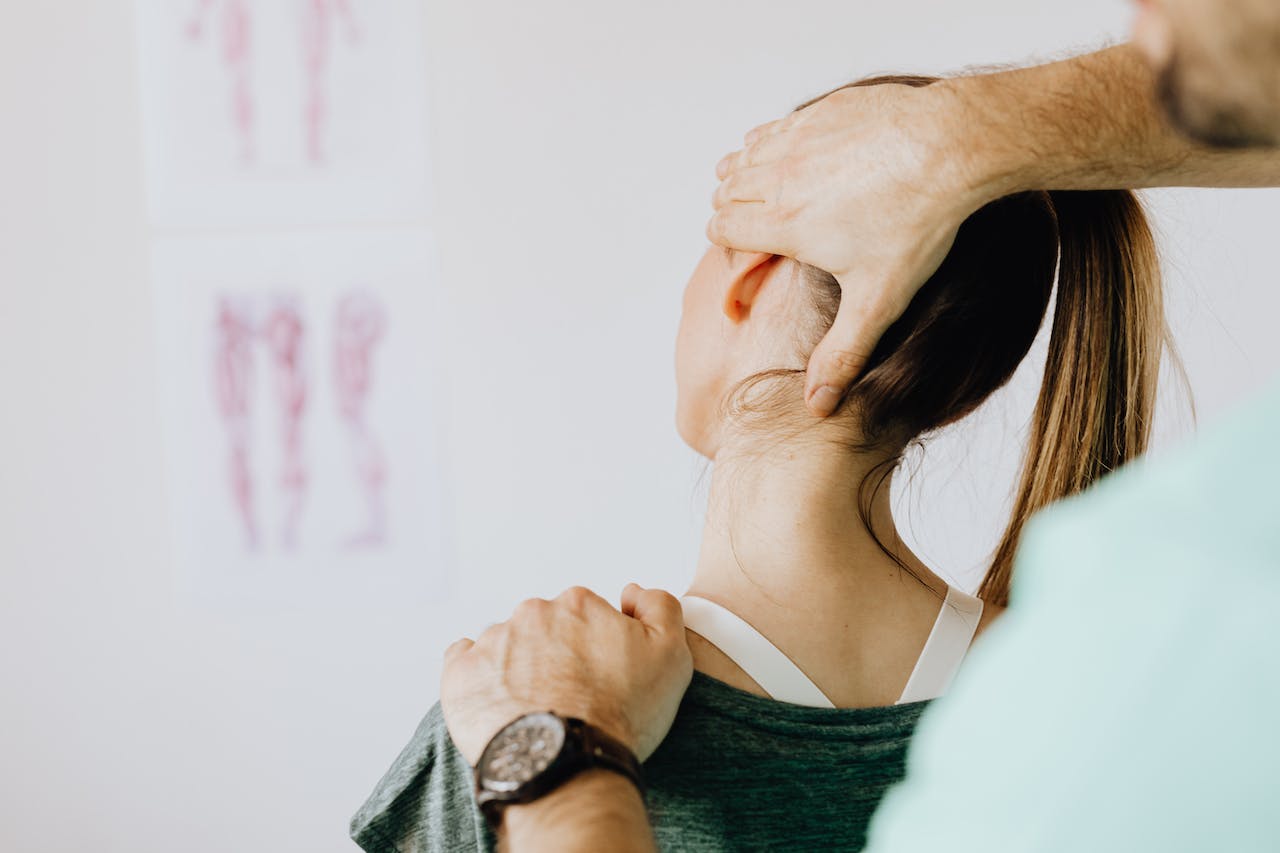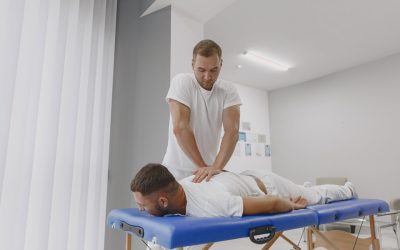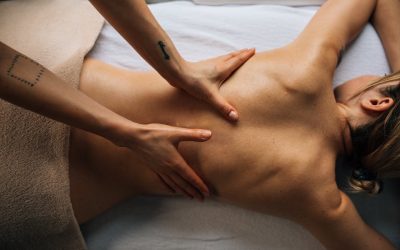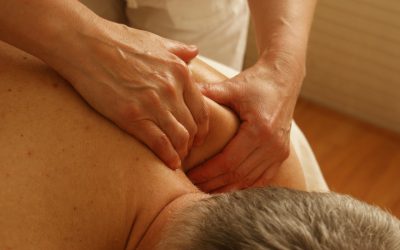Understanding the importance of recovery in sports performance is crucial for athletes seeking to optimize their training and achieve peak results. One effective intervention that has gained significant attention is therapeutic massage. This comprehensive guide explores the role of therapeutic massage in athlete recovery, highlighting its benefits and application in sports injury management.
By reviewing the existing literature and contrasting various methods, this paper aims to provide athletes with a deeper understanding of how therapeutic massage can help enhance their recovery process. From reducing muscle soreness and inflammation to improving flexibility and range of motion, therapeutic massage offers a multitude of benefits that can positively impact an athlete’s overall well-being.
Whether you’re a professional athlete or simply enjoy participating in competitive sports, implementing effective recovery strategies is essential for maintaining optimal performance. Through regular sessions of therapeutic massage, athletes can experience improved muscle recovery, enhanced physical function, and accelerated healing from sports injuries.
Emphasizing Recovery In Athletic Success
The Importance Of Recovery In Sports
Recovery plays a vital role in optimizing athletic performance. Athletes push their bodies to the limit, and without proper recovery, they risk injury and overtraining. By allowing the body time to rest and repair, athletes can restore energy levels and heal muscle damage caused by intense physical activity.
Recovery Strategies For Peak Performance
To achieve peak performance, athletes need to implement a comprehensive recovery plan. This plan should include various strategies that enhance recovery efficiency. Balancing rest, nutrition, and other recovery techniques is crucial for ensuring optimal results.
One essential aspect of an athlete’s recovery plan is adequate rest. This means getting enough sleep each night to allow the body time to repair itself. Rest days are also important, as they give muscles and joints a chance to recover from intense training sessions.
Nutrition plays a significant role in recovery as well. Consuming a balanced diet that includes sufficient protein helps repair damaged muscle tissue. Hydration is equally important; athletes must replenish fluids lost through sweat during exercise.
In addition to rest and nutrition, athletes can incorporate other recovery techniques into their routine. These may include stretching exercises to improve flexibility and prevent muscle tightness or using foam rollers or massage balls for self-myofascial release.
Active VS Passive Recovery Methods
Athletes have two primary options.
Active recovery involves engaging in low-intensity activities that promote blood flow and aid in muscle recovery without causing additional stress on the body. Examples of active recovery include light jogging or cycling, swimming, or practicing yoga.
Passive recovery methods involve complete rest or activities that require minimal effort on the athlete’s part. This may include taking hot baths or showers, using ice packs or cold compresses on sore muscles, or receiving therapeutic massages.
Understanding when to use each method depends on individual needs and circumstances. Active recovery is beneficial on rest days when athletes want to keep their bodies moving without overexertion. Passive recovery methods, on the other hand, are ideal after intense training sessions or competitions when the body needs time to heal and rejuvenate.
To maximize the benefits of recovery, it’s often recommended to combine both active and passive approaches. This combination allows for a well-rounded approach that addresses different aspects of the body’s healing process.
Delving Into Therapeutic Massage For Athletes
Understanding Sports Massage Therapy
Sports massage therapy is a specialized form of massage that focuses on helping athletes recover from sports injuries. It aims to alleviate pain, reduce muscle tension, and improve overall performance. Unlike regular massage techniques, sports massage targets specific areas of the body that are affected by sports-related injuries.
Benefits Of Massage On Performance And Recovery
Massage plays a crucial role in enhancing an athlete’s performance and promoting faster recovery. One significant benefit is improved blood circulation and oxygen delivery to the muscles. This increased circulation helps to remove waste products like lactic acid, reducing muscle soreness and inflammation.
Another advantage of therapeutic massage is its ability to reduce muscle tension. Intense physical activity can lead to tight muscles, which can hinder performance and increase the risk of injury. By using various massage techniques, therapists can help release this tension, allowing athletes’ muscles to relax and function optimally.
Moreover, therapeutic massage promotes relaxation and reduces stress levels in athletes. High stress levels can negatively impact an athlete’s recovery process. By incorporating regular massages into their routine, athletes can experience reduced anxiety levels and better overall well-being.
Different Massage Techniques For Athletes
There are several different massage techniques commonly used in sports therapy. Deep tissue massage is one such technique that targets deeper layers of muscle tissue to relieve chronic pain or stiffness caused by injuries.
Swedish massage is another popular technique that involves long strokes, kneading, and circular movements to relax superficial muscles while improving blood flow.
Myofascial release is a specialized technique that focuses on releasing tightness in the fascia (connective tissue) surrounding the muscles. This technique helps restore mobility and flexibility while reducing pain caused by adhesions or scar tissue.
Physical therapists tailor these various massage techniques based on individual athlete needs. They assess the specific areas affected by injuries or muscle imbalances before determining which technique would be most beneficial.
Incorporating therapeutic massage into an athlete’s recovery plan can significantly enhance their overall performance and reduce the risk of future injuries. By improving circulation, reducing muscle tension, and promoting relaxation, athletes can experience faster recovery times and improved physical well-being.
The Science Of Massage In Sports Medicine
Mechanisms Behind Massage Effectiveness
Massage is an essential component of sports medicine, and its effectiveness can be attributed to several mechanisms. Firstly, massage stimulates the release of endorphins, which are natural pain-relieving chemicals produced by the body. This helps athletes find relief from pain during and after a massage session.
Furthermore, therapeutic massage plays a crucial role in enhancing flexibility, range of motion, and muscle elasticity. Through targeted manipulation techniques, massage therapists work on the muscles and connective tissues to increase their pliability. This allows athletes to perform better by improving their overall mobility and reducing the risk of injury.
Managing Muscle Soreness And Injury
One significant benefit of sports massage is its ability to address muscle soreness effectively. After intense physical activity or training sessions, athletes often experience muscle soreness due to micro-tears in the muscle fibers. However, targeted massage therapy can help alleviate this discomfort by promoting blood circulation and oxygen flow to the affected areas.
Moreover, therapeutic massage aids in the healing process of sports-related injuries. By targeting injured muscles or soft tissues, massage therapists apply specific techniques that promote tissue repair and reduce inflammation. This accelerates recovery time for athletes and allows them to return to their sport more quickly.
Regular sports massages can play a preventive role in managing acute muscle injuries before they become chronic conditions. By addressing minor injuries promptly through targeted therapy sessions, athletes can minimize the risk of long-term damage or recurring issues.
Massage And Blood Flow Improvement
Another vital aspect of therapeutic massage is its positive impact on blood flow improvement. During a sports massage session, increased pressure applied to the muscles promotes vasodilation – widening of blood vessels – leading to enhanced blood circulation throughout the body.
This improved blood flow facilitates better delivery of nutrients and oxygen to muscles while aiding in the removal of metabolic waste products such as lactic acid. As a result, athletes experience faster recovery times and reduced muscle fatigue.
Timing And Frequency Of Therapeutic Sessions
When To Schedule Post-Injury Massages
Determining the appropriate timing for post-injury massage sessions is crucial for athletes’ recovery. It is essential to consider the severity and stage of the injury when scheduling massages. Collaborating with healthcare professionals can help create optimal recovery plans.
Post-injury massages should be scheduled based on the specific needs of each athlete. For minor injuries, a massage session can be beneficial within a few days after the injury occurs. This timing allows for initial healing to take place while also addressing any muscle tension or imbalances that may have developed due to the injury.
For more severe injuries or during the acute phase of an injury, it is important to consult with healthcare professionals before scheduling a massage session. They can provide guidance on when it is safe and appropriate to begin therapeutic interventions.
Collaboration between athletes, coaches, and healthcare professionals is key in determining the best timing for post-injury massages. By working together, they can ensure that massage therapy complements other treatment modalities and supports overall recovery goals.
Optimal Frequency For Sports Massages
Finding the right balance between frequency and effectiveness of sports massages is essential for athletes’ recovery. The frequency of sports massages should be tailored based on individual athlete needs and goals.
For athletes in intense training periods or those who participate in high-impact sports, regular sports massages may be beneficial. These sessions can help prevent muscle soreness, improve flexibility, and reduce the risk of overuse injuries. In such cases, weekly or bi-weekly massages might be appropriate.
On the other hand, some athletes may benefit from less frequent sessions depending on their training load and recovery needs. Overuse of massage therapy can lead to excessive muscle relaxation and interfere with performance if not balanced properly.
To determine optimal frequency, athletes should work closely with qualified massage therapists who understand their sport-specific demands and training schedules. By considering factors such as training intensity, competition schedule, and individual recovery rates, they can develop a massage plan that supports their overall performance and well-being.
Pre-Event VS Post-Event Massage Timing
Understanding the benefits of pre-event and post-event massages can greatly enhance an athlete’s performance and recovery. Pre-event massages are typically performed shortly before a training session or competition to prepare the body for optimal performance.
Pre-event massages focus on warming up the muscles, increasing blood flow, and enhancing flexibility. This can help improve range of motion, reduce muscle tension, and prevent injuries during intense physical activity.
Post-event massages, on the other hand, are performed after a training session or competition to promote recovery and relaxation. These sessions aim to reduce muscle soreness, alleviate fatigue, and facilitate muscle repair. By incorporating post-event massages into their routine, athletes can enhance their recovery process and maintain peak performance levels.
Complementary Recovery Techniques
Role Of Rest And Nutrition In Recovery
Rest and nutrition play a vital role in an athlete’s recovery process. It is crucial to recognize the importance of rest and provide adequate time for sleep, relaxation, and rejuvenation. Rest allows the body to repair damaged tissues, reduce inflammation, and replenish energy levels. Adequate sleep is especially important as it supports muscle repair, hormone regulation, and overall physical and mental well-being.
In addition to rest, proper nutrition is essential for optimal recovery. Athletes should nourish their bodies with a balanced diet that includes carbohydrates, proteins, healthy fats, vitamins, and minerals. These nutrients provide the building blocks necessary for tissue repair and growth. Consuming enough calories is also crucial to support energy expenditure during training sessions.
Maximizing Sleep For Athletic Recovery
Quality sleep is a critical component of an athlete’s recovery routine. During sleep, the body releases growth hormones that aid in muscle repair and regeneration. It also helps regulate immune function, reduces stress levels, and enhances cognitive performance.
To maximize sleep quality for athletic recovery:
1. Establish a consistent sleep schedule by going to bed and waking up at the same time every day.
2. Create a relaxing bedtime routine that includes activities such as reading or listening to calming music.
3. Ensure your sleeping environment is conducive to restful sleep by keeping it dark, quiet, cool, and comfortable.
4. Avoid consuming caffeine or engaging in stimulating activities close to bedtime.
5. Limit exposure to electronic devices before bed as the blue light emitted can disrupt sleep patterns.
By prioritizing quality sleep and implementing these strategies for better sleep hygiene, athletes can optimize their recovery process.
Stretching And Hydrotherapy Benefits
Stretching exercises are beneficial for athletes as they enhance flexibility, improve range of motion, prevent injuries such as strains or sprains, and promote faster recovery from workouts or competitions. Incorporating stretching routines into training sessions or recovery plans can help maintain muscle balance and prevent muscle imbalances that may lead to injuries.
Hydrotherapy techniques, such as hot and cold baths, can also complement massage therapy for sports injuries. Alternating between hot and cold water stimulates blood circulation, reduces inflammation, relieves muscle soreness, and promotes faster healing. Athletes can incorporate hydrotherapy by taking contrast showers or immersing themselves in hot tubs or cold plunge pools.
Combining massage therapy with stretching exercises and hydrotherapy methods creates a comprehensive approach to athlete recovery. These complementary techniques work synergistically to promote muscle repair, reduce inflammation, alleviate pain, and enhance overall performance.
Incorporating rest and proper nutrition, maximizing sleep quality, and utilizing stretching exercises along with hydrotherapy techniques are essential components of an athlete’s recovery plan. By implementing these strategies consistently, athletes can optimize their recovery process and stay on top of their game.
Psychological Effects Of Massage On Athletes
Impact On Mood, Anxiety, And Stress Levels
Massage therapy offers numerous psychological benefits for athletes. It plays a vital role in reducing anxiety and stress levels while promoting a positive mood state. When athletes engage in intense physical activity, they often experience heightened levels of stress and anxiety. The application of therapeutic massage techniques helps to alleviate these negative emotions by triggering the release of endorphins, which are natural mood-boosting chemicals in the body. As a result, athletes feel more relaxed and experience an overall sense of well-being.
Moreover, regular massage sessions can enhance mental resilience in sports performance. Athletes face immense pressure to perform at their best during competitions or training sessions. This pressure can lead to increased stress levels and hinder their ability to focus effectively. However, through massage therapy, athletes can learn how to manage stress more efficiently and develop coping mechanisms that contribute to their mental resilience. By incorporating massages into their recovery routine, athletes can maintain a balanced emotional state and be better equipped to handle the challenges that come with competitive sports.
Psychological Well-being And Athletic Performance
The connection between psychological well-being and athletic success is undeniable. Athletes who possess a positive mindset tend to perform better in their respective sports disciplines. Massage therapy serves as an effective tool for improving mental focus and confidence among athletes.
By receiving regular massages, athletes can achieve a state of deep relaxation that allows them to let go of any negative thoughts or distractions that may hinder their performance. This enhanced mental clarity enables them to concentrate fully on their training or competition goals.
Furthermore, massage therapy promotes psychological well-being by reducing muscle tension and increasing blood circulation throughout the body. When muscles are relaxed and properly oxygenated, athletes experience improved physical comfort, leading to greater self-assurance in their abilities.
The Future Of Massage In Sports Performance
Current Evidence And Emerging Trends
Scientific research continues to provide support for the efficacy of massage therapy in athlete recovery. Studies have shown that therapeutic massage can help reduce muscle soreness, improve range of motion, and enhance overall performance. Athletes are increasingly incorporating massage into their recovery protocols to optimize their training and prevent injuries.
Staying updated on emerging trends and advancements in athlete recovery is crucial for athletes and sports professionals. As new research emerges, it is important to evaluate its findings and consider how they can be applied to enhance recovery outcomes. By staying informed about the latest developments in massage therapy, athletes can make informed decisions about incorporating evidence-based practices into their recovery routines.
In addition to established benefits, future directions for research and practice in athlete recovery and massage therapy are being explored. One area for further investigation is the use of massage therapy as a complementary treatment for specific sports injuries such as boxing simulation. Researchers are examining how targeted massage techniques can aid in the rehabilitation process by promoting healing, reducing pain, and improving functional outcomes.
To explore innovative approaches to enhance recovery outcomes, collaboration between researchers and practitioners is essential. By working together, they can develop new protocols that integrate various modalities such as manual therapy techniques, stretching exercises, and neuromuscular reeducation. These collaborative efforts will contribute to advancing the field of athlete recovery by providing comprehensive strategies tailored to individual needs.
Furthermore, ongoing research aims to uncover the mechanisms behind the beneficial effects of massage therapy on sports performance. By understanding how different techniques impact physiological processes such as blood flow, inflammation response, and tissue repair, researchers can refine treatment protocols based on specific goals or conditions.
Conclusion
In conclusion, therapeutic massage is a valuable tool for athletes seeking to optimize their recovery and enhance their performance. This article has explored the science behind massage in sports medicine, the timing and frequency of therapeutic sessions, complementary recovery techniques, the psychological effects of massage on athletes, and the future of massage in sports performance. By delving into these topics, it becomes evident that massage not only helps with physical recovery but also plays a significant role in mental well-being and overall athletic success.
To fully reap the benefits of therapeutic massage, athletes are encouraged to incorporate it into their training regimen consistently. Whether it’s through regular sessions with a licensed massage therapist or utilizing self-massage techniques, athletes can experience reduced muscle soreness, improved range of motion, enhanced relaxation, and increased overall performance. Further research and innovation in this field hold promise for even more advanced techniques and applications.
Take charge of your athletic recovery by exploring the world of therapeutic massage. Incorporate it into your routine and witness the transformative effects it can have on your physical and mental well-being. Embrace the power of massage to optimize your performance and achieve your athletic goals.
Harnessing The Power Of Therapeutic Massage For Sports Injuries: Your Path To Recovery!
Are you struggling with the aftermath of a sports injury, feeling hampered by pain and limited mobility? Turn to the experts at MedicinEvolution, where the healing touch of Therapeutic Massage is expertly applied to target your sports-related injuries, offering a path to effective recovery! Wave goodbye to the discomfort caused by strained muscles, overexertion, and repetitive sports movements—as MedicinEvolution taps into the root causes of your injury, facilitating a transformative healing process. With their skilled approach, you’ll experience a remarkable turnaround from the pain that once hindered your athletic performance!
Whether you’re grappling with persistent pain, stiffness, or the frustrating limitations of a sports injury, their specialized methods are designed to meet the specific needs of your condition. Don’t let injury setbacks control your athletic journey—take the reins and schedule your session with MedicinEvolution today! Step into the realm of Therapeutic Massage and embark on a road to a more active, pain-free life. Your body—and your athletic aspirations—will be grateful!






0 Comments